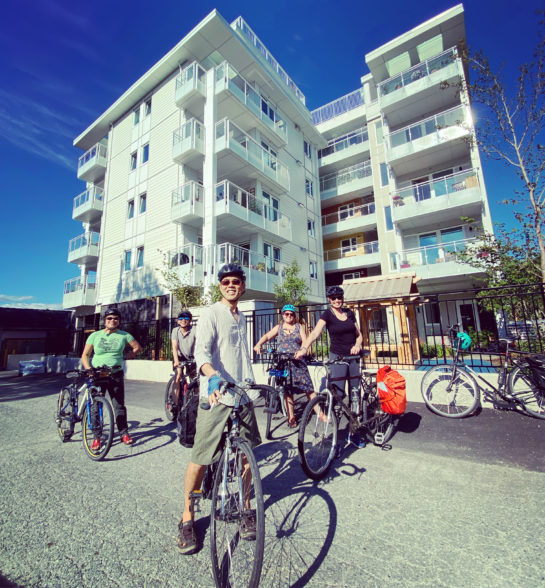
My neighbour, Roger, was loitering in the foyer of St. James Square, a community hall on Vancouver’s bucolic West Side, when he spotted a flyer on the wall that kind of ruined his day.
HELP SAVE OUR NEIGHBOURHOOD, read the all-caps call to action.
The flyer, produced by the Upper Kitsilano Residents Association, warned the city was planning to hand over control of the neighbourhood to large corporations and real estate investment trusts. Developers would soon be cutting down trees and replacing character homes with oversized boxes that would be rented out for huge profits.
It was a frightening warning, one that has been sounded in scuffles about the pace of change in cities across the continent. But Roger was perplexed by the image that the flyer used to illustrate its dystopian future. It was a photo of an apartment building, which happened to be Roger’s own home – and mine, too.
Roger and I are part of a group of urban idealists who poured our life savings into a co-housing village on Vancouver’s East Side. After six years of work, we moved into our new apartments in March, 2021. We were proud to have created a building that was as rich with social spaces and coziness as it was in features that shrunk our carbon footprint. We also thought our six-storey building was downright handsome.
How did our beloved urban village become someone else’s image of a capitalist hell?
The question cuts to the heart of Canada’s housing crisis. Home prices and rents have skyrocketed across the country. Young professionals can’t afford to buy. People at the bottom end of the income spectrum can’t afford to rent near work or school. Thousands of people are being pushed onto the streets. Meanwhile, Canada, which depends on immigration to drive the economy and support aging boomers, plans to welcome more than 430,000 new immigrants this year alone, all of whom will need homes.
We desperately need more housing to catch up with demand. Where should those homes be built and what should they look like? These are the questions I try to answer in my Globe and Mail feature story. Read on.